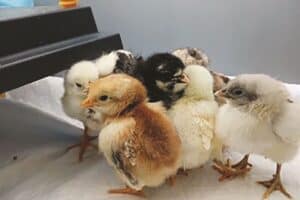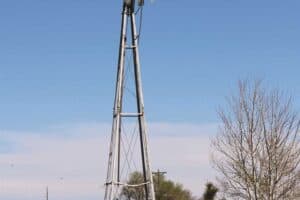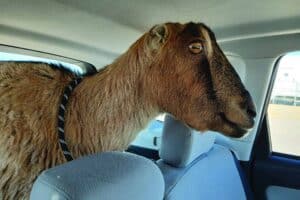Longtime local journalist Bill Radford and his wife, Margaret, live on 5 acres in the Falcon area with chickens, rabbits, dogs, cats, two noisy parrots, goats and two horses. Contact Bill at billradford3@gmail.com
It’s a scary world out there right now.Store shelves are empty; toilet paper is now a precious commodity. Downtown Colorado Springs streets are eerily empty. Those who can work at home are doing so; a growing number are without jobs. There is no escaping reality at the movies; theaters are closed. A relaxing massage to help ease your worries? Nope.The Colorado Springs Gazette had a story on rural areas in the state taking a relatively relaxed approach to the coronavirus pandemic. ìYou donít see any of the mass hysteria here that you are seeing in the cities,î Jessica Dorman, president of the Burlington Chamber of Commerce, told The Gazette. ìI think we all travel just as much as they do. Weíre just more calm about things and maybe more practical.îThat, though, was before many of the current restrictions came into place; that attitude may have changed.Still, the country life does offer a bit of a respite; even though I’m just minutes from the city, I can put down my phone and leave my computer and the 24/7 news cycle and go pet horses or fill feed buckets or clean chicken coops. I can watch green shoots emerging from the ground and look forward to spring and summer. I can, for a short but grateful period, feel apart from the world and its problems.But I’m not. And we’re all in this together.On Nextdoor, the online neighborhood hub, a post reminded me and others of this: “Does someone need something they have been unable to find at the store? At risk and need groceries or need an errand run? How can we help each other? We are stronger when we support each other. We are not on an island, we are a village, and caring for each other helps us all. I grew up in a farming/ranching community, which was always there for each other. I believe people will still do that.”So, yes: Check on your neighbors, particularly the more elderly who are most at risk. Let’s be prudent, but not panic. Let’s be kind. Let’s rise together.Meanwhile, I’ll turn to more mundane matters here in hopes of offering a bit of escape myself.The birds and the bees:When I went out to feed the chickens the other day, there was a surprise waiting for me: bees swarming around the can that holds the chicken feed. And in opening the can (carefully), I found even more bees.My wife is the family bee expert; she took a class in beekeeping back in college (she likes to recount that she got a B in beekeeping from “Dr. Bî), and will soon be ordering bees to fill up the hive she bought last fall via Craigslist. I asked her to come out and she confirmed the bees were honeybees ñ- although she wasn’t sure whether they were wild or domesticated. She also was perplexed by their presence, but a little online research quickly cleared up the mystery.The website of Pueblo West-based Heritage Acres Market poses a scenario just like ours: “Itís midwinter or early spring, and all of a sudden your chicken feeder is covered in honeybees. Ö I bet youíre wondering where the bees came from and what you can do about them?”Nicole Gennetta, “a beekeeper, chicken enthusiast, certified Master Gardener, paramedic and ‘Backyard Bounty Podcast’ host” (and former Falcon resident), goes on to explain: “The bees are not actually eating the chicken feed or grains, but collecting pollen, minerals, dust and yeast to make bee bread for their hungry young. Chicken feed dust is high in protein and serves as a winter substitute to flower pollen.” (Bee bread, she details, is the bees’ main source of protein and is fed to bee larvae and newly emerged bees for growth and development.)The bees must have gotten their fill rather quickly; I haven’t spotted them around the chicken food since then.And speaking of chicken feed …We have two more mouths to fill. We’ve lost some chickens to old age in the past year, so we’ve added two hens to the flock.They’re Siberian Pavlovskaya, which is Russia’s most ancient chicken breed; we bought them from Stephanie Gagnepain, who raises ultra-rare breeds of chickens. Read all about Stephanie in People on the Plains.In getting started with some of those breeds, she turned to Greenfire Farms in north Florida, which specializes in raising “the world’s rarest and most beautiful chickens.” Greenfire Farms has information on the Siberian pavlovskaya on its website (greenfirefarms.com). Among the nuggets of information:
- Pavlovskaya chickens are known to be extremely cold hardy and have unique feathering on their feet, similar to the feathering on wild grouse. A Russian myth describes the origin of this exotic breed as an illicit tryst between a chicken and grouse.
- Despite their hardiness, the breed all but perished in the Soviet era. At one time in the early 1990s, the total global population of the authentic Pavlovskaya was reduced to two roosters, and one was infertile. By breeding the fertile rooster with somewhat similar hens, and then back-breeding to the father, the breed was reestablished.







